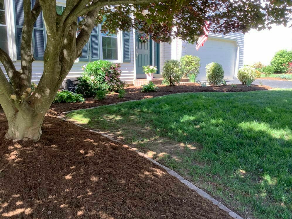Retaining walls are made from a variety of materials, depending on their purpose. The materials
you choose to build your retaining walls will depend on the purpose of the wall, your design
preferences, and the cost. Concrete is the most commonly used material for commercial
purposes, while pressure-treated timbers can be used for residential application
s. Your retaining
wall material should be strong enough to support the structure’s weight.
Landscapes must have walls to stop earth from sliding down steep slopes or eroding in heavy
rains. They are also common in parks and public gardens, where they serve as retainers for
ornamental landscaping components. For more information on this component of landscape
design, please read the following. You’ll be glad that you did. This question might surprise you. If
you’re not familiar with retaining walls, here are some examples of their use.
creating a retaining walls
The first step to creating a retaining walls is to determine the area’s size and shape. For every
twelve inches of height, the retaining wall should be oriented to the slope by approximately one
inch. This will direct the water away from the wall and decrease the amount of slope required.
Drainage tiles are an option if the terrain is very steep. Make sure the backfill is properly drained.
Adding a shear key is another important feature in retaining walls. This part of the wall acts as a
retentive barrier against various types of earth pressures. It can be placed on top of the
foundation slab or at the base of the retaining walls. You can use a shearkey to add safety and
decorative features to your retaining Wall. This factor is important if you want to increase the
height of your wall.
Stem walls, another type of retaining Wall, are also available. These walls are often used for
erosion control and stabilizing steep slopes. They can be made from steel, timber, interlocking
steel panels, or both. The piles are driven deep into the ground and held in place by the soil at
the base. Stem walls are generally cheaper than other types of retaining walls, but you should
be aware of the potential bending forces they can cause.
Retaining walls help you prevent soil from sliding, eroding, or otherwise losing its structural
integrity. A retaining walls can be made from different materials depending on its purpose. It is a
sturdy, functional, and durable structure which helps prevent soil erosion or sliding. A retaining
walls can be a beautiful addition to your property if they are constructed correctly. The most
important thing to do is use the right materials!
Retaining walls can be used to stabilize a hilly yard, level out uneven ground, or provide
pedestrian access. They will prevent soil erosion, make your yard flat, and protect the land from
water’s lateral pressure. They also provide access to sloped areas so that people can walk
around them. They also help prevent erosion. The best way to avoid a retaining wall is to plan
ahead before you start the project.

